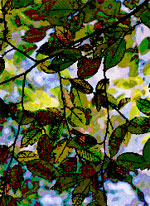Seminary Woods
Ownership & Partnership Importance

Seminary Woods is under private ownership. There have been past conversations and meetings with Seminary decision makers regarding the woodlands' purchase. MALC remains an interested partner for the protection of this significant woodland. Partnerships will be required for the woods long-term protection.
MALC receives continuous requests from individuals concerned about the long-term protection of the woods. Past communications with decision-makers have resulted in two main outcomes:
- Land value received a high appraised value and development pressure is diminished at the present time; and
- As a privately-held parcel, invasive species removal or any actions on the property requires coordination with the property owner.
Past efforts included a broad partnership of local residents, environmental groups, land conservation groups, & government entities. These individuals worked together to seek funds to protect the woodland during a time when development pressure was extremely high. The goal for many has been to maintain the sites integrity with sound land management while seeking funds to purchase or by applying other conservation methods that would provide long-term protection of the site. It is important to have willing partners that can work together for a common goal. MALC remains a willing partner on this important project to help find a solution that will address all those concerned.
Background

This revered woodland is located near Lake Michigan in the southeastern portion of Milwaukee County in the City of St Francis. This southern mesic forest contains 68 acres of giant trees, rare ephemeral flowers, migratory birds, and a wide variety of wildlife. The footpaths that crisscross the vast woods have been used by generations of neighbors and distant visitors.
A now rare mix of large beech, sugar maple, basswood, red and white oak, and some white birch tower over the mature ironwood, musclewood, and witchhazel composing the understory (Detailed vegetation studies were performed by James B. Levenson in 1975 as a doctoral study in Plant Ecology with the University of Wisconsin, Milwaukee. More recently Richard Barloga and Lawrence A. Leitner, principal biologist for SEWRPC, have also separately performed vegetation surveys of the area). This woodland represents the last remnants of what used to be a major forest type along Milwaukee's coast. It has seen fewer of the major incursions from invasive species than many of the other mature hardwood forests in southeastern Wisconsin due to the ongoing efforts of volunteers, its shear size, and relative isolation.
Large colonies of trillium, and both white and yellow trout lilies dominate portions of the forest floor while hepatica, bloodroot, blue stemmed goldenrod, ferns, and the occasional lion's paw dot the spots between moss covered logs and lichen patched boulders in the groundlayer. This high species diversity and canopy maturity along with the low frequency of weeds like garlic mustard, buckthorn, and honeysuckle gives an immediate sense of why it is considered one of the "special places to preserve and protect" by the Wisconsin Department of Natural Resources in the Land Legacy Report.
